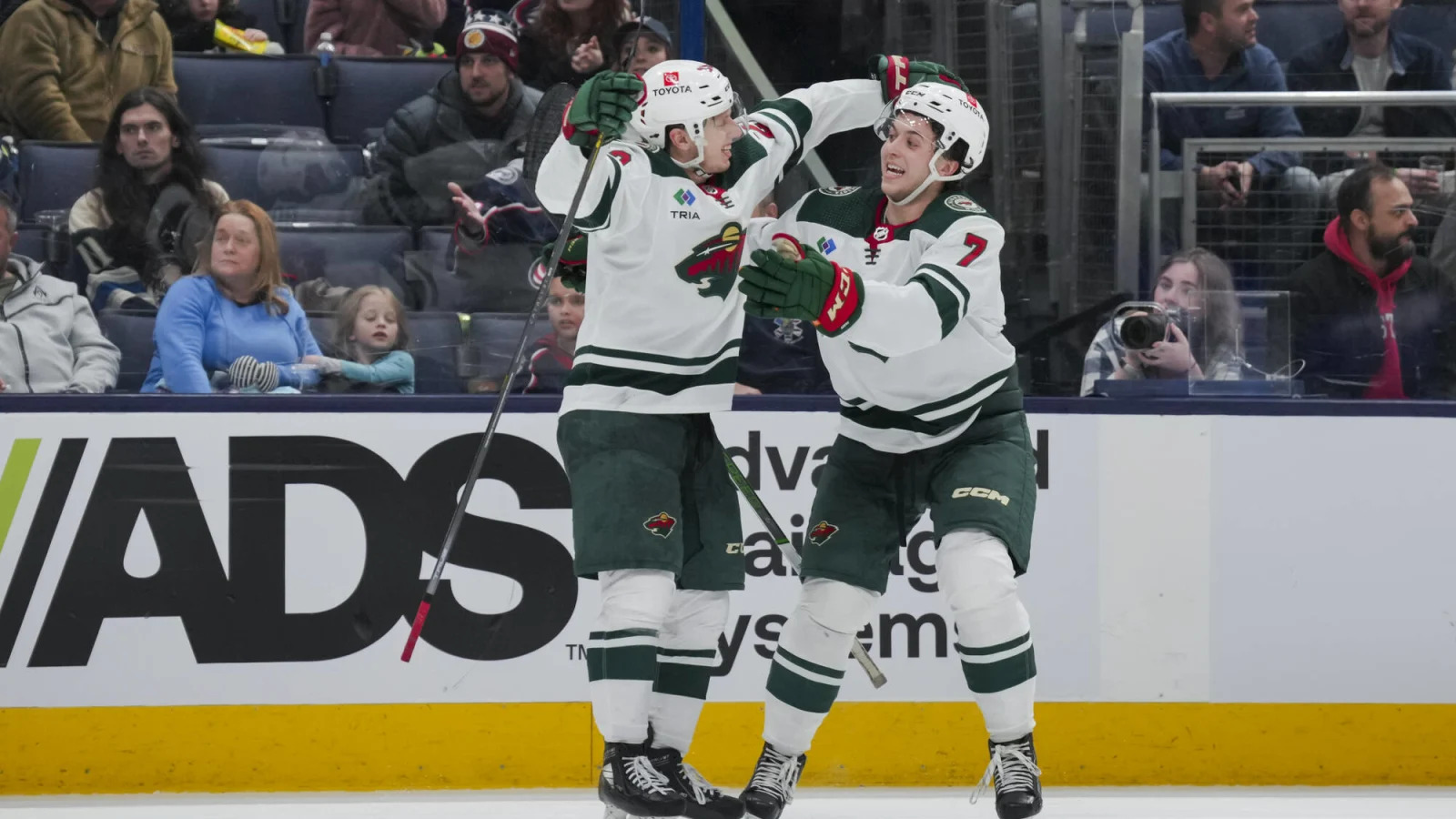
Do Rossi and Faber Extensions Have the Wild Heading Back Towards Cap Hell?
The Minnesota Wild want to extend Marco Rossi and Brock Faber, and they’d like pen to paper this offseason. “It seems certain the Wild will look to sign [Faber] to a max eight-year deal, and he’s almost certainly looking at an average annual value above $8 million per,” The Athletic reported in a recent mailbag. “Jake Sanderson signed an eight-year, $64.4 million deal with Ottawa. They’re both 21. That’s the comparable. Marco Rossi seems tailor-made for a bridge deal.”
But how is that possible with the Wild’s salary cap situation? Well, let’s do the math and find out if it’s possible.
First, how much cap would each of these extensions take up? Based on the Sanderson comp, Faber will probably command an Average Annual Value (AAV) between $8 million and $9.5 million. He’s certainly a better player than Sanderson this year, but it’s tough to project their relative value into the future. Given his RFA status, it may be tough for him to push for more money than Sanderson because of the team’s negotiating leverage.
The reporting on Rossi’s deal is less defined than on Faber’s, which makes the cap hit harder to predict. The team is reportedly pursuing eight years for Faber, but with Rossi, The Athletic only reported that it will be a “bridge deal.” A bridge deal buys up most of a player’s RFA years, giving teams a low-cost method of seeing what they have in a player. It comes with a risk of a larger payday in the future. However, it eliminates the risk of tying up too many years of salary cap on a prospect who never reaches a high-end outcome.
That makes it harder to find a comparable contract for Rossi for several reasons. First, a “bridge” could mean either a two- or three-year extension. Furthermore, Rossi is a unique prospect. At 5’9”, 182 lbs., he’s extremely undersized. He also struggled last season before showing much more promise this year.
Rossi leads all rookies in goals even though 2023 projects to be one of the best draft classes of all time. He’s become one of the league’s best rookies despite missing a year due to COVID-related heart complications.
The Minnesota Wild want to extend Marco Rossi and Brock Faber, and they’d like pen to paper this offseason. “It seems certain the Wild will look to sign [Faber] to a max eight-year deal, and he’s almost certainly looking at an average annual value above $8 million per,” The Athletic reported in a recent mailbag. “Jake Sanderson signed an eight-year, $64.4 million deal with Ottawa. They’re both 21. That’s the comparable. Marco Rossi seems tailor-made for a bridge deal.”
But how is that possible with the Wild’s salary cap situation? Well, let’s do the math and find out if it’s possible.
First, how much cap would each of these extensions take up? Based on the Sanderson comp, Faber will probably command an Average Annual Value (AAV) between $8 million and $9.5 million. He’s certainly a better player than Sanderson this year, but it’s tough to project their relative value into the future. Given his RFA status, it may be tough for him to push for more money than Sanderson because of the team’s negotiating leverage.
The reporting on Rossi’s deal is less defined than on Faber’s, which makes the cap hit harder to predict. The team is reportedly pursuing eight years for Faber, but with Rossi, The Athletic only reported that it will be a “bridge deal.” A bridge deal buys up most of a player’s RFA years, giving teams a low-cost method of seeing what they have in a player. It comes with a risk of a larger payday in the future. However, it eliminates the risk of tying up too many years of salary cap on a prospect who never reaches a high-end outcome.
That makes it harder to find a comparable contract for Rossi for several reasons. First, a “bridge” could mean either a two- or three-year extension. Furthermore, Rossi is a unique prospect. At 5’9”, 182 lbs., he’s extremely undersized. He also struggled last season before showing much more promise this year.
But Rossi was incredibly productive in the minors:
Rossi leads all rookies in goals even though 2023 projects to be one of the best draft classes of all time. He’s become one of the league’s best rookies despite missing a year due to COVID-related heart complications.
All this is to say that perhaps there’s a ceiling to what Rossi can become. Or, as his agent will surely argue, perhaps he’s on an upward trajectory to become an elite scoring center. That uncertainty could explain why Guerin wants to get a deal done this summer rather than wait to extend Rossi in the summer of 2025.
Most GMs would choose to sign a prospect later so they have more information to evaluate the player. But Guerin seems willing to gamble, as he’s done in the past with long extensions for Kirill Kaprizov and Matt Boldy. It’s a testament to his faith in his scouting and development program, but it makes it difficult to project Rossi’s market value. Still, there are a few comparable bridge deals for both a two- and a three-year extension.
Leave a Reply